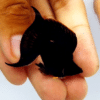To provide the best experiences, we use technologies like cookies to store and/or access device information. Consenting to these technologies will allow us to process data such as browsing behaviour or unique IDs on this site. Not consenting or withdrawing consent, may adversely affect certain features and functions.
The technical storage or access is strictly necessary for the legitimate purpose of enabling the use of a specific service explicitly requested by the subscriber or user, or for the sole purpose of carrying out the transmission of a communication over an electronic communications network.
The technical storage or access is necessary for the legitimate purpose of storing preferences that are not requested by the subscriber or user.
The technical storage or access that is used exclusively for statistical purposes.
The technical storage or access that is used exclusively for anonymous statistical purposes. Without a subpoena, voluntary compliance on the part of your Internet Service Provider, or additional records from a third party, information stored or retrieved for this purpose alone cannot usually be used to identify you.
The technical storage or access is required to create user profiles to send advertising, or to track the user on a website or across several websites for similar marketing purposes.
Red Devil Vampire Crab - Geosesarma Hagen - Decapod Crustacean 1 × £8.71
Purple Vampire Crab - Geosesarma Dennerle - Decapod Crustacean 2 × £7.74

 Red Devil Vampire Crab - Geosesarma Hagen - Decapod Crustacean
Red Devil Vampire Crab - Geosesarma Hagen - Decapod Crustacean  Purple Vampire Crab - Geosesarma Dennerle - Decapod Crustacean
Purple Vampire Crab - Geosesarma Dennerle - Decapod Crustacean 














Emily Carter (verified owner) –
I recently purchased the 5 x Poecilia Shpenops Black Molly Mix Tropical Fish for my aquarium, and I couldn’t be happier! After about two weeks, they’ve settled in beautifully and have brought such life to my tank. These little livebearers are not only stunning with their rich black colors but also incredibly social and active. I love watching them interact with each other and explore the space.
I’ve kept a variety of aquarium fish over the years, but these mollies stand out due to their hardiness and adaptability. Compared to other brands I’ve tried, the quality of these fish is noticeably better; they arrived healthy and vibrant, which shows that they were well cared for prior to sale. I did notice that one of them was a bit shy at first, but now they all swim confidently around the tank.
If you’re a beginner or an experienced hobbyist looking to add some charm to your setup, I highly recommend this mix! Just make sure to provide them with plenty of hiding spots and plants to explore. Overall, I’m thrilled with my purchase and can’t wait to see them thrive more as they grow!